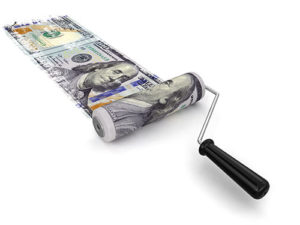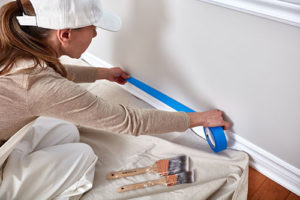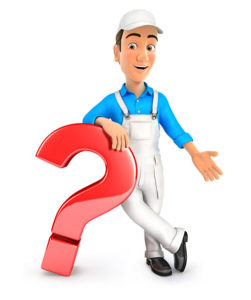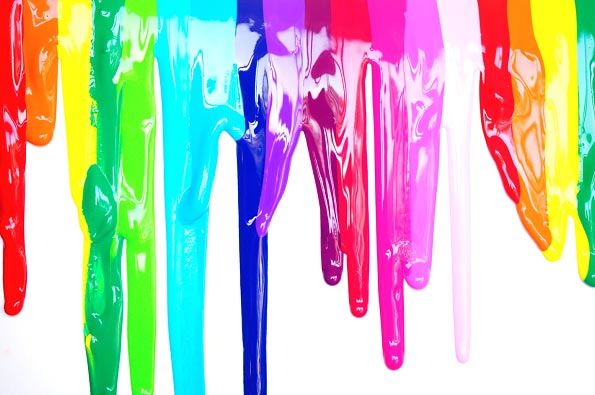How Much Does Residential Painting Cost?
 Painting your homes with the help of the right painters is one of the best ways to revamp the look of your abode. It is undeniably the best way to give your home an extraordinary appearance and add colorful effects to it. Overall, good paint adds to the aesthetics of your home and often increases the value of your home as well. Therefore investing your time in finding the right residential painter becomes essential.
Painting your homes with the help of the right painters is one of the best ways to revamp the look of your abode. It is undeniably the best way to give your home an extraordinary appearance and add colorful effects to it. Overall, good paint adds to the aesthetics of your home and often increases the value of your home as well. Therefore investing your time in finding the right residential painter becomes essential.
Most people get positively overwhelmed by the idea of painting their houses. They make big decisions on their own without consulting with experts. As a result, they make huge mistakes like choosing the wrong color, skipping the primer, and neglecting to set aside enough budget. Therefore, we always recommend that you find a professional painter to paint your home.
While looking for good painters, you must always pay attention to the ideal rates. So, what should be the perfect cost of residential painting? To find out how much residential painting costs, continue reading this post.
Ideal Cost of Residential Painting
Interior Painting
Painting homes in a perfect way is a labor-intensive task. We can only trust people with excellent skills, expertise, and experience in this case. Generally, the painters charge based on square footage. Let’s suppose you have a home around 2,300 square feet, while the average cost of painting your house ranges from $2 – $6 per square foot.
The average range is anywhere from $5,000 to $11,000 to paint the entire interior of the house. The majority of the homeowners in the US pay around $7,000 on average.
To learn more about the internal painting, refer to this article.
Exterior Painting
External Painting is essential to boost the curb appeal of your house. An excellent exterior paint enhances the look of the home and protects it from extreme weather to which it is exposed. Experts recommend that one should choose a dry or warm season for exterior painting. It is also recommended that one must go for dark colors to paint the exterior since light colors tend to fade away during rainy seasons.
The cost of painting an average home’s exterior in the US usually ranges between $1,700 to $4,000. This brings the average price per square foot to $0.50 – $3.30. Some other factors also play a vital role in determining the cost of painting.
Significant Factors Affecting Residential Painting Cost
Apart from the above numbers, certain essential factors play a crucial role in deciding the cost of the painting job. Knowing which factors influence painting cost will help you set more realistic goals once the painters get started.
Project Size
You already know that the bigger the project (i.e. size (square footage) of the area that needs to be painted), the more it will cost to get professional services. Do you want your bedroom to be painted? Or is it just the exterior of the house?
The amount of area you want to get painted will be one of the most significant factors in determining your overall cost.
Also, some areas of your home will be harder to paint on or around as compared to other areas. For example, some homes might have a lot of obstacles that make the job of the painter even harder. Obstacles like large evergreen bushes, pergolas, arbors, retractable awnings, and steeply sloping ground. These types of obstacles will make your residential painting even more expensive.
Paint Quality
Paint quality is also an essential element when it comes to the cost of painting your house. There are several paint brands to choose from. Each brand offers a quality of different grade.
We recommend that you always go with the highest-quality paints since they are more durable. Low-quality paints easily peel off and fade away over time. True, higher-quality paints would cost you a lot more initially than lower-standard paints, but since they outlast the sub-standard paints, you will save money over the long term.
Preparations
 Another major cost determinant is the amount of preparation work that needs to be done. Painters will always make sure that preparations are taken into consideration while estimating the cost.
Another major cost determinant is the amount of preparation work that needs to be done. Painters will always make sure that preparations are taken into consideration while estimating the cost.
Wall with cracks, chipped paint, warping, or molds would demand time to be fixed. Fixing these issues involves a lot of work therefore, such a project will require you to set aside an extensive budget.
You can also refer to this article for more information on preparations.
Getting the Best Value for Your Money
If you think about the above essential factors, it would be best to find professional painting companies, and they will perfectly take care of their work. The highly-skilled painters based in good companies will surely give you the best quality work while keeping the costs reasonable.
 People Also Ask
People Also Ask
- How much does it cost to hire someone to paint the interior of a 2,500 square-foot house?
- The average cost of painting the interior of a 2,500 square-foot home would probably cost you around $5,500.
- How much does it cost to paint a 12×12 room?
- The average charge of painting a 12×12 room will cost you about $400 to $900.
- How long does it take to paint a three-bedroom house?
- To properly paint a medium-sized bedroom, painters take around four to five hours easily. This includes multiple things like taping the edges, covering the floor and prepping the surface. So for three medium-sized bedrooms, it would take around 14-15 hours. If you wish to paint the trims as well, then this would add an extra 4 to 5 hours to paint all three rooms.
- How do painters calculate square footage for your painting estimate?
- Painters simply multiply the length of each room in your home by their corresponding width to get the total amount of square footage in a particular space.
Conclusion
After reading this post, you can assume that painting correctly is not as easy as it seems. There are a lot of essential factors that you must pay attention to before hiring Painters to do their jobs. Selecting high-quality paints is extremely important to make sure that the Paint doesn’t fade away quickly. A lot of people get confused when it comes to choosing the perfect color for their houses.
There is an endless number of brands that sell paint, which might get you dizzy, so to tackle this situation, get in touch with Pamblanco Painting, which is probably the best company in Tuscon that aids people in entirely painting their houses. Get your free quote today!


 Acrylic paint is the best paint to use for exterior painting projects because it has the highest durability. Acrylic paint can also resist extreme weather conditions for quite some time. It also maintains it’s pigment over time so you won’t have to worry about fading.
Acrylic paint is the best paint to use for exterior painting projects because it has the highest durability. Acrylic paint can also resist extreme weather conditions for quite some time. It also maintains it’s pigment over time so you won’t have to worry about fading. Small insects, birds, and bugs are very responsive to colors due to their limited sensory function. If you have a problem with them ingesting your outdoor spaces, you can use colors such as yellow and blue to repel them. Certain colors work better on specific bugs, so you need to know what problem you’re dealing with prior to re-painting your property exterior.
Small insects, birds, and bugs are very responsive to colors due to their limited sensory function. If you have a problem with them ingesting your outdoor spaces, you can use colors such as yellow and blue to repel them. Certain colors work better on specific bugs, so you need to know what problem you’re dealing with prior to re-painting your property exterior.